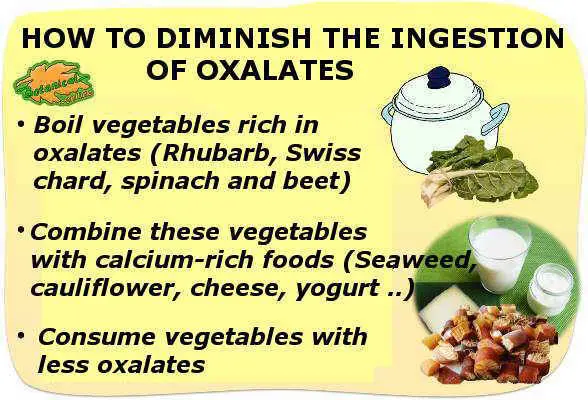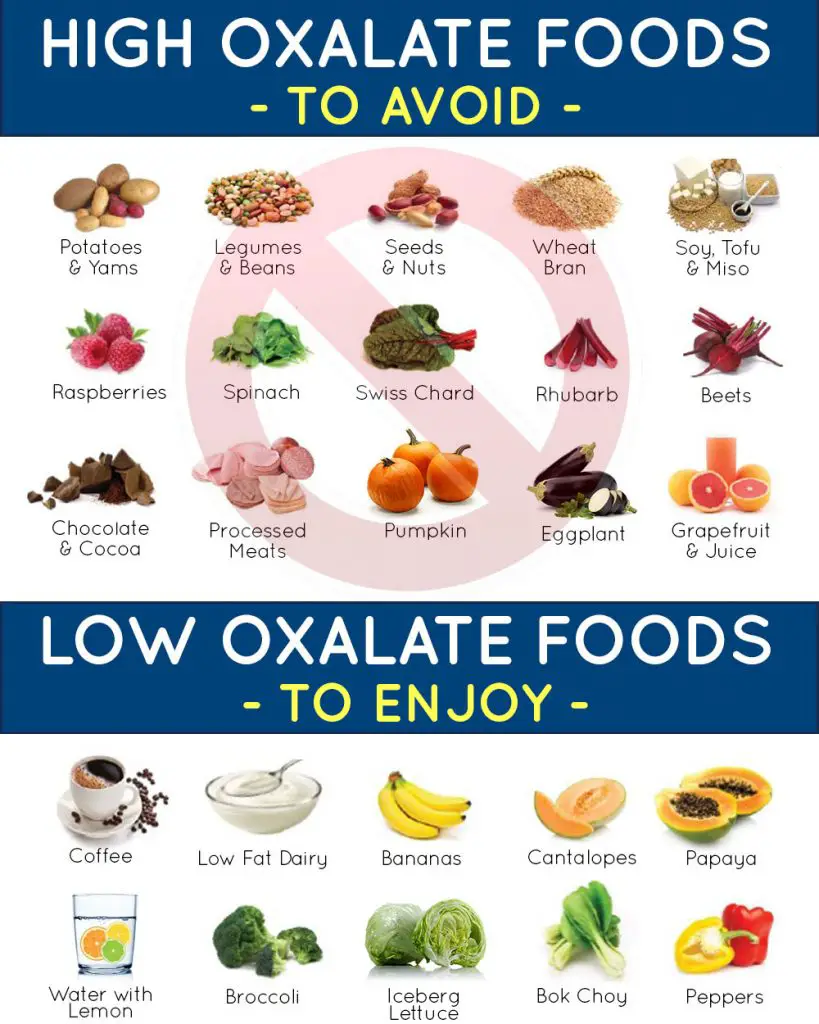How do you cook out oxalates?
Jump To:
First of all, why are oxalates bad?
When oxalate levels are high, there’s a greater chance it will bind to calcium, forming kidney stones. Because oxalates bind to minerals like calcium, they can prevent your body from absorbing beneficial nutrients in your digestive tract. High oxalate levels have also been linked with several gastrointestinal conditions, including Crohn’s disease and inflammatory bowel disease, and intestinal permeability or leaky gut, which leads to greatly increased levels of absorbed oxalates.
And who should worry about oxalates?
Should you avoid Oxalates? People who tend to form kidney stones may benefit from a low oxalate diet. However, healthy people trying to stay healthy do NOT need to avoid nutrient-dense foods just because they are high in oxalates. Oxalate is simply not a nutrient of concern for most people.
Possible signs of oxalic acid poisoning:
- Abdominal pain
- Convulsion
- Kidney problems
- Low blood pressure
- Mouth and throat pain
- Shock, tremors, vomiting, and weak pulse.
People with the above symptoms are better to avoid oxalates. First aid treatment includes drinking water or milk. Seek emergency care if these symptoms appear suddenly.

Boiling markedly reduced soluble oxalate content by 30-87% and was more effective than steaming (5-53%) and baking (used only for potatoes, no oxalate loss). An assessment of the oxalate content of cooking water used for boiling and steaming revealed an approximately 100% recovery of oxalate losses.
Does cooking remove oxalates?
Researchers found that steaming and boiling [NIH] were effective cooking methods for decreasing the oxalate content of spinach and other vegetables. Boiling appears to be more effective; it reduced the soluble oxalate content by 30 percent to 87 percent.
Are Millets high in oxalate?
The soluble oxalate contents in cooked cereals and millets ranged from 1.2 mg/100 g in rice to 6.6 mg/100 g in pearl millet. Although pearl millet is rich in calcium (42.0 mg/100 g), it has low calcium bio- availability (12.5 mg/100 g), which may be because of the high content of oxalate (20.0 mg/100 g).
Does soaking grains remove oxalates?
In legumes, soaking [NIH] has been found to decrease phytate, protease inhibitors, lectins, tannins and calcium oxalate.
What is the fastest way to get rid of oxalates?
Continued Drinking plenty of water to help your body flush oxalates out. Consuming enough calcium, which binds to oxalates during digestion. Limiting sodium and sugar intake, which may contribute to kidney stones at high levels.
Does lemon juice remove oxalates?
The ingestion of the lemon juice seems to dissipate the effect of great quantity of citrates which in turn increases the excretion of oxalates. The presence of these two elements simultaneously: citrate and oxalate compensate for their opposite effect.
How do potatoes reduce oxalates?
The present data suggested that boiling was most effective in reducing the soluble oxalate content of vegetables compared to steaming and baking (used only for potatoes). The loss of soluble oxalate was 30-87% for boiling and only 5-19% (not including spinach, green Swiss chard leaves, and carrots) for steaming.
Is Ginger high in oxalates?
Ginger & Kidney Stones Ginger does have a fair amount of oxalate. And, most of that oxalate is soluble, which makes it more absorbable. (12) It is unlikely that eating or cooking with ginger will add a significant amount of oxalate to your diet.
Does boiling destroy oxalic acid?
Heat can break down oxalic acid which will allow the body to absorb higher amounts of vitamins, calcium, iron and fibre. However, many phytonutrients can get destroyed by the cooking process. In addition, water-soluble vitamins, such as vitamin C and B, can leach out during the cooking process.
Is millet low oxalate?
The oxalate contents (21–29 mg/100 g dry weight) of the millets were low. Considerable between- and within-millet differences were observed with regard to most nutrients analyzed. The overall results are suggestive of the underexplored potential of millets as sources of dietary nutrients.
Does millet cause kidney stones?

Limit Oxalate Some foods high in oxalate are Spinach, beets, okra. Rhubarb, raspberries, dates, avocado. Rice bran, soy flour, bulgur, brown rice flour, millet, barley flour, corn grits, wheat berries.
Is turmeric high in oxalates?
Turmeric contains oxalates and this can increase the risk of kidneys stones. “The consumption of supplemental doses of turmeric can significantly increase urinary oxalate levels, thereby increasing the risk of kidney stone formation in susceptible individuals.”
How do almonds reduce oxalates?
Blanching, autoclaving and roasting, on the other hand, reduced oxalate content by 13.3-33.3%, 46.7-86.7% and 86.7-93.3% respectively. The higher loss of oxalate in blanched, autoclaved and roasted almond kernels could be explained by the fact that oxalate is thermolabile in nature.
Does baking oats remove phytic acid?
There are several preparation methods that allow us to successfully reduce the amount of phytic acid in foods, including oats. Cooking is one of the easiest ways to reduce the about of phytic acid in oats, but that defeats the point of overnight oats.
How much oxalate is in lentils?
and lentils (Lens culinaris), ranging from 1.3 to 24.0 mg/100 g. Overall, soluble oxalate ranged from 0.9 to 571.3 mg/100 g.
